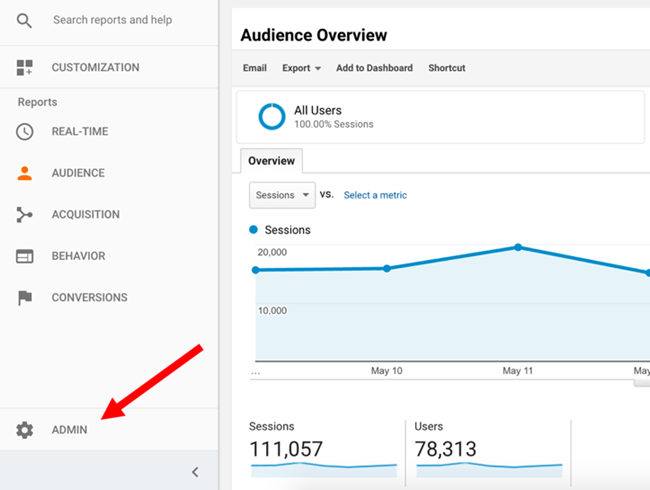Trick Features of Remarketing In Google Analytics Explained
Harnessing Remarketing in Google Analytics: A Comprehensive Guide
Utilizing remarketing in Google Analytics uses businesses a critical side in getting to out to possible consumers. This guide will drop light on the important actions included in using the complete possibility of remarketing in Google Analytics, leading to enhanced advertising end results.
Comprehending Remarketing in Google Analytics
Remarketing in Google Analytics allows organizations to purposefully target users that have previously connected with their web site or mobile application. By leveraging data from Google Analytics, services can produce personalized remarketing checklists based upon customer behavior, such as pages gone to, activities taken, or details goals attained. This powerful device enables organizations to re-engage with users who have revealed interest in their products or solutions, eventually increasing the possibility of conversion.
Comprehending the different types of remarketing methods is important for an effective project - What Is “Remarketing” In Google Analytics?. Google Analytics offers various choices, including typical remarketing, vibrant remarketing, and remarketing checklists for search ads (RLSA) Each kind serves a special function and can be customized to fulfill details advertising and marketing purposes
Moreover, assessing the efficiency of remarketing campaigns is crucial for optimizing results. Google Analytics gives valuable understandings into the effectiveness of different remarketing strategies, permitting businesses to make data-driven choices and fine-tune their targeting approach. By constantly adjusting and keeping track of remarketing efforts based on analytics information, companies can make best use of ROI and drive success in their advertising and marketing campaigns.
Establishing Remarketing Campaigns

After establishing audience listings, the next step is to connect Google Analytics with Google Ads. By connecting these two platforms, companies can effortlessly move target market listings from Google Analytics to Google Advertisements for remarketing objectives. This assimilation permits even more precise targeting and better project efficiency.
Once the accounts are connected, companies can produce remarketing projects in Google Advertisements utilizing the target market lists previously specified in Google Analytics. These campaigns can be personalized with specific ad creatives, messaging, and bidding approaches to efficiently re-engage with previous site visitors and drive conversions. By following these actions, companies can leverage the power of remarketing to boost their advertising initiatives and boost ROI.
Using Target Market Division Methods

Predefined segments in Google Analytics allow you to quickly analyze typical audience classifications like brand-new users, returning individuals, or users that completed a certain objective on your web site. Personalized sectors, on the various other hand, enable you to develop unique segments based on particular requirements that are essential to your organization purposes. Dynamic remarketing listings automatically readjust based on customer habits, showing tailored advertisements to individuals that have connected with your site in particular methods.
Studying Remarketing Efficiency Metrics
Upon evaluating the performance of remarketing campaigns in Google Analytics, the evaluation of essential performance metrics supplies valuable insights right into audience involvement and conversion rates. By delving right into metrics such as click-through rates (CTR), conversion prices, cost per procurement (CERTIFIED PUBLIC ACCOUNTANT), and return on ad invest (ROAS), marketers can gauge the success of their remarketing efforts. CTR suggests the portion of customers who clicked the advertisement after seeing it, reflecting the ad's relevance and appeal. Conversion rates determine the portion of users who completed a preferred action, such as purchasing, after clicking the ad. CPA exposes the typical expense incurred for each conversion, aiding assess campaign earnings. ROAS, on the other hand, measures the revenue generated for every dollar spent on advertising. Evaluating these metrics enables online marketers to enhance projects, improve target market targeting, and designate budget plans efficiently to improve overall remarketing performance.
Maximizing Remarketing Techniques
When refining remarketing methods in Google Analytics, concentrating on target market segmentation is vital for accomplishing their website campaign success. By dividing your target market right into details segments based upon their actions, demographics, or rate of interests, you can customize your ads a check my source lot more effectively to every team. This targeted strategy increases the probability of involving users that have actually already revealed rate of interest in your solutions or items, bring about higher conversion rates.
Another critical aspect of enhancing remarketing techniques is continually screening and refining your campaigns (What Is “Remarketing” In Google Analytics?). A/B testing various advertisement creatives, messaging, or offers can assist you recognize what resonates finest with your target market and drives the most conversions. By evaluating the efficiency of these examinations in Google Analytics, you can make data-driven decisions to optimize your remarketing initiatives further
Additionally, leveraging vibrant remarketing can significantly improve your project results. This feature enables you to reveal personalized advertisements to customers based on their past communications with your site, showcasing services or items they have previously watched. By providing customized content to users based upon their passions and behaviors, vibrant remarketing can aid boost involvement and drive conversions.
Final Thought
In final thought, harnessing remarketing in Google Analytics is a strategic strategy to target customers that have actually previously involved with a web site. By developing customized target market listings and using target market division methods, companies can optimize remarketing advocate increased conversion rates. Assessing efficiency metrics and continually optimizing methods are vital for maximizing the effectiveness of remarketing initiatives.
Google Analytics supplies various alternatives, consisting of typical remarketing, vibrant remarketing, and remarketing checklists for search ads (RLSA)After establishing up target market lists, the next step is to connect Google Analytics with Google Advertisements. By connecting these 2 platforms, services can flawlessly transfer audience listings from Google Analytics to Google Ads for remarketing objectives.As soon as the accounts are connected, organizations can create remarketing campaigns this post in Google Advertisements making use of the audience details formerly defined in Google Analytics.When refining remarketing strategies in Google Analytics, concentrating on audience division is extremely important for attaining project success.